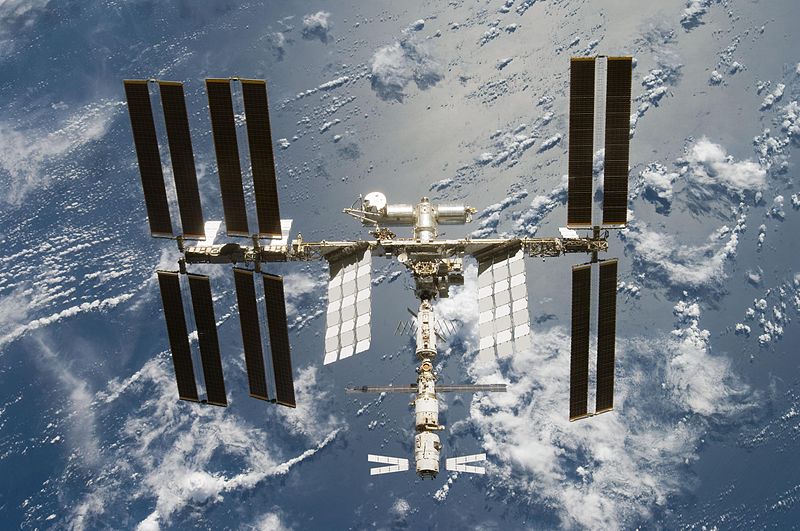I quite often wave at the sky. My neighbours probably think I’m mad, but there’s a method in my madness. I follow an account on Twitter which uses my GPS location to tell me at what times the International Space Station is passing overhead, and where to look for it. So, when the sky is clear, I take a look in the specified direction, see whether if I can spot the fast-moving point of brilliant light, and if I can, I give it a wave.
Yes, I know the crew don’t have imaging equipment sensitive enough to see me. That’s not the point.

It’s the ISS’s fifteenth anniversary today, marking the point where the first module, the Russian Zarya (‘Sunrise’) was launched into orbit. At a time when it’s often said that humanity’s horizons are shrinking and ambition failing, it’s worth thinking about this little outpost in low Earth orbit, keeping a permanent bubble of livable conditions away from our home planet. It’s no mean feat: as the recent hit film ‘Gravity’ points out, life in space is impossible and creating the conditions for humans to live and work in some degree of comfort for months at a time is a testament to the skill and imagination of the engineers who designed and built the ISS, and to those who maintain and add to it. It’s certainly worth a wave.
And that includes UK engineers. As you read this, the ISS crew is bolting two cameras onto a custom-engineered, steerable mount on one of the station’s Russian modules. Built at the Rutherford Appleton Laboratory near Oxford, these cameras — one medium-resolution, capable of spotting objects about 5m across, and one high-resolution at one pixel per metre — are owned by a Canadian start-up company called UrtheCast (pronounced ‘Earthcast’, and why it isn’t spelled that way we can’t imagine) and will send video images back to Earth; the company plans to process and stream video over the World Wide Web in as close to real time as it can manage. That’ll help us improve our knowledge of the planet, in particular its weather systems — which might help improve the response to natural disasters such as the one currently taking place in the Philippines, where our friends from the charity RedR are working to supply sanitation and healthcare facilities to those displaced by last week’s typhoon.
But the most important aspect of the ISS is that it symbolises one of the most important strengths of engineering — that it allows humans to cooperate. Like another great international science and technology project, CERN and the Large Hadron Collider, it shows that distance, difference in culture and even lack of common languages are no barrier to skilled people to work together to meet a common goal, even one that might appear impossible — whether it’s providing the conditions to survive in space or to probe the innermost properties of matter under the most extreme conditions. Ultimately, it’s this which is going to provide the solution to the biggest problems facing mankind — let’s hope the next collaboration to prove the doubters wrong will be ITER and its exploration of nuclear fusion.
That little point of light speeding overhead on a clear night is visible proof of what we can do, just as humans, working together. It might be slightly foolish, but giving it a wave helps to underline confidence in humanity and that engineers still can, as their predecessors have done for centuries, create a better world for their fellows. And actually, with the station’s new camera, if I get the neighbours together and we all wave at once, the crew might be able to see us.
To donate to RedR’s appeal for the Philippines, please visit the charity’s website




Red Bull makes hydrogen fuel cell play with AVL
Formula 1 is an anachronistic anomaly where its only cutting edge is in engine development. The rules prohibit any real innovation and there would be...